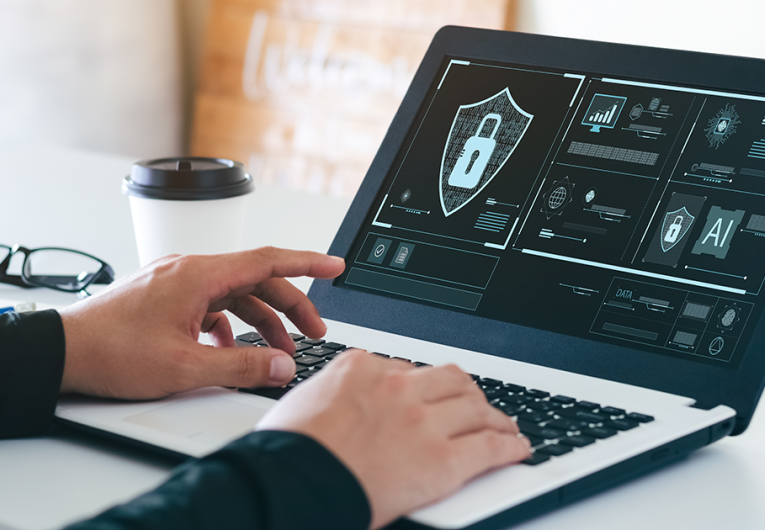
The Critical Role of Benchmarking Security Awareness in the Face of Phishing Threats
In today's increasingly digital world, businesses face a wide array of cybersecurity threats. Among the most persistent and dangerous are phishing attacks—deceptive attempts by cybercriminals to trick individuals into revealing sensitive information, such as passwords, financial data, or personal details.
Despite advancements in cybersecurity technology, the human element remains a significant vulnerability. This is why it is crucial for businesses to not only educate their employees about security risks but also to regularly assess the effectiveness of this education through benchmarking campaigns that simulate phishing attacks. These periodic assessments are not just beneficial—they are essential for maintaining a robust cybersecurity posture.
Understanding the Human Factor in Cybersecurity
Cybersecurity is often seen as a technical challenge, but human behavior is a critical aspect of the equation. No matter how advanced a company's firewalls, encryption protocols, or intrusion detection systems are, a single employee’s mistake can compromise the entire system.
Phishing attacks exploit this vulnerability by targeting the weakest link: human judgment. Employees might inadvertently click on malicious links, open dangerous attachments, or provide confidential information in response to a cleverly disguised email. The consequences of such actions can be devastating, leading to data breaches, financial loss, reputational damage, and even regulatory penalties.
The Need for Continuous Education and Awareness
To combat this threat, businesses invest in security awareness training, aiming to educate employees about the various forms of phishing and other social engineering tactics. However, awareness training is not a one-time event.
Cyber threats evolve, and so must the knowledge and vigilance of the workforce. Without ongoing reinforcement, employees might become complacent or forget key lessons. This is where periodic benchmarking campaigns that simulate phishing attacks come into play.
The Value of Simulated Phishing Attacks
Simulated phishing attacks are controlled exercises that test employees' responses to phishing attempts. These simulations can be customized to mimic real-world scenarios, reflecting the types of attacks that a particular business or industry might face. By conducting these tests regularly, businesses can gauge the current level of security awareness among their employees, identify vulnerabilities, and measure the effectiveness of their training programs.
The value of these simulations lies in their ability to provide actionable insights. When employees fall for a simulated phishing attack, it reveals specific weaknesses—whether in an individual's understanding of security protocols or in the overall training program. This information allows businesses to tailor their future training efforts to address these gaps directly. Moreover, employees who fall for these simulations are typically provided with immediate feedback, turning a potential failure into a valuable learning opportunity.
Benchmarking Security Awareness: Measuring Progress Over Time
Benchmarking is the process of comparing a company's current performance against a standard or set of best practices. In the context of security awareness, benchmarking involves measuring how well employees respond to phishing simulations over time. By tracking these results, businesses can assess whether their security awareness programs are effective or if adjustments are needed.
Benchmarking provides several key benefits:
1. Identifying Trends: By conducting simulations at regular intervals, businesses can identify trends in employee behavior. For example, if the rate of successful phishing attempts decreases over time, it indicates that the training is working. Conversely, an increase in susceptibility might signal the need for enhanced or more frequent training.
2. Motivating Employees: Regular benchmarking keeps security awareness at the forefront of employees' minds. Knowing that they might be tested at any time encourages employees to remain vigilant and apply what they've learned.
3. Demonstrating Accountability: Benchmarking provides tangible evidence that a company is taking cybersecurity seriously. This is not only important for internal purposes but also for demonstrating compliance with regulatory requirements and building trust with customers and partners.
4. Allocating Resources Effectively: Benchmarking helps businesses allocate their cybersecurity resources more effectively. By understanding where the vulnerabilities lie, companies can prioritize their efforts, whether that means investing in additional training, implementing new security technologies, or revising policies.
In an age where cyber threats are a constant concern, businesses cannot afford to take a passive approach to security awareness. Periodic benchmarking campaigns that simulate phishing attacks are a proactive strategy for ensuring that employees remain a strong line of defense rather than a potential vulnerability. By regularly assessing and refining their security awareness programs, businesses can not only protect their sensitive data but also build a culture of security that permeates the entire organization. In doing so, they safeguard not just their own interests but those of their customers, partners, and the broader community as well.
The trends, insights, and solutions you need to grow your business.
By signing up, you’re subscribing to our monthly email newsletter, The
Wire. You may unsubscribe at any time.
Your information stays safe with us. Learn more about our privacy
policy.











![[#MSP_NAME#] Logo](/themes/sparklight_business/images/transition-logos/migration-banner-logo-[#MSP_CD#].png)
